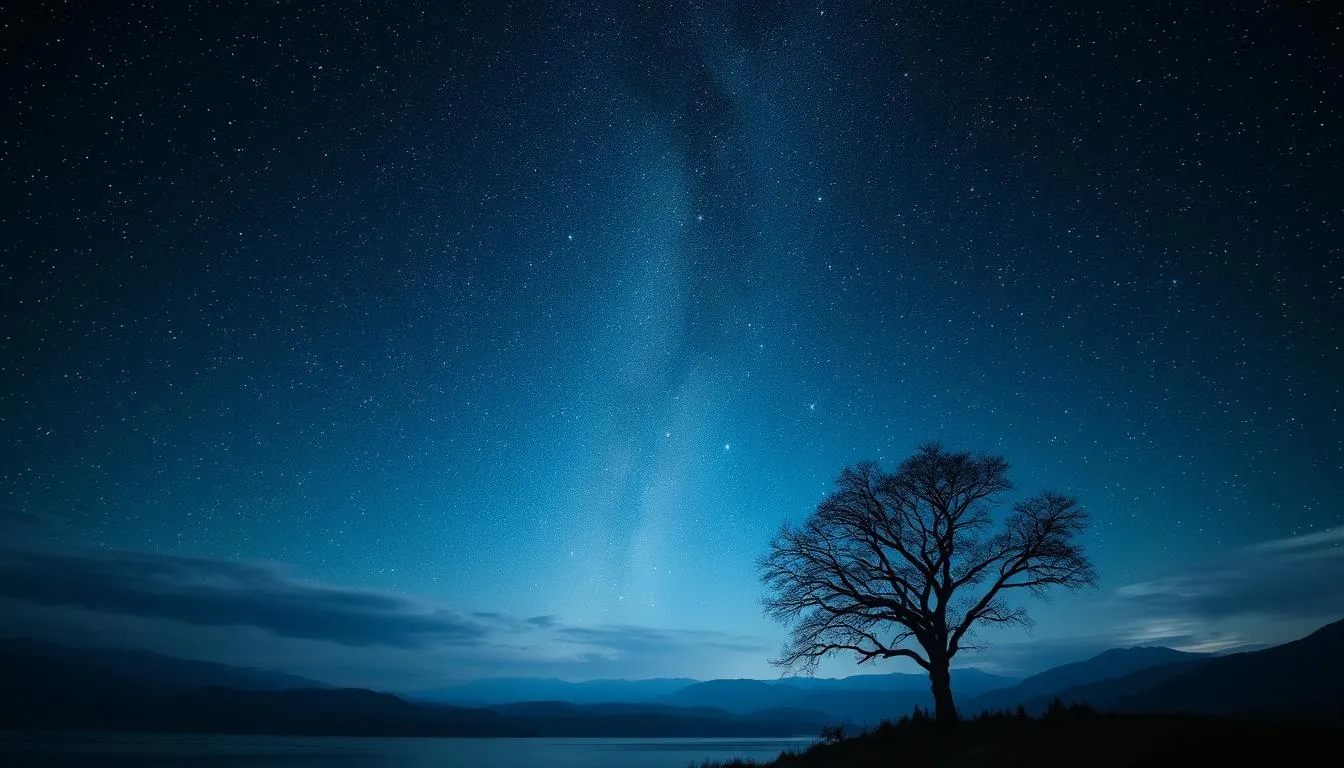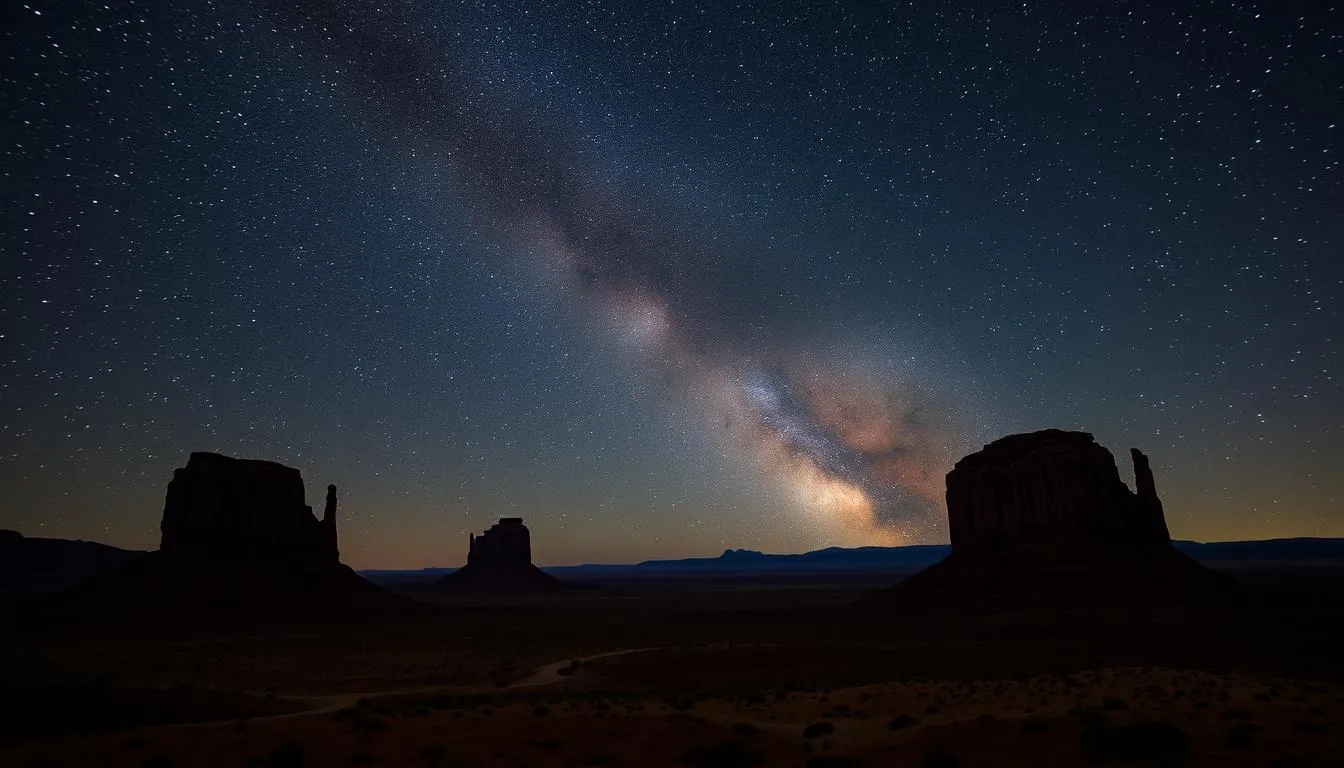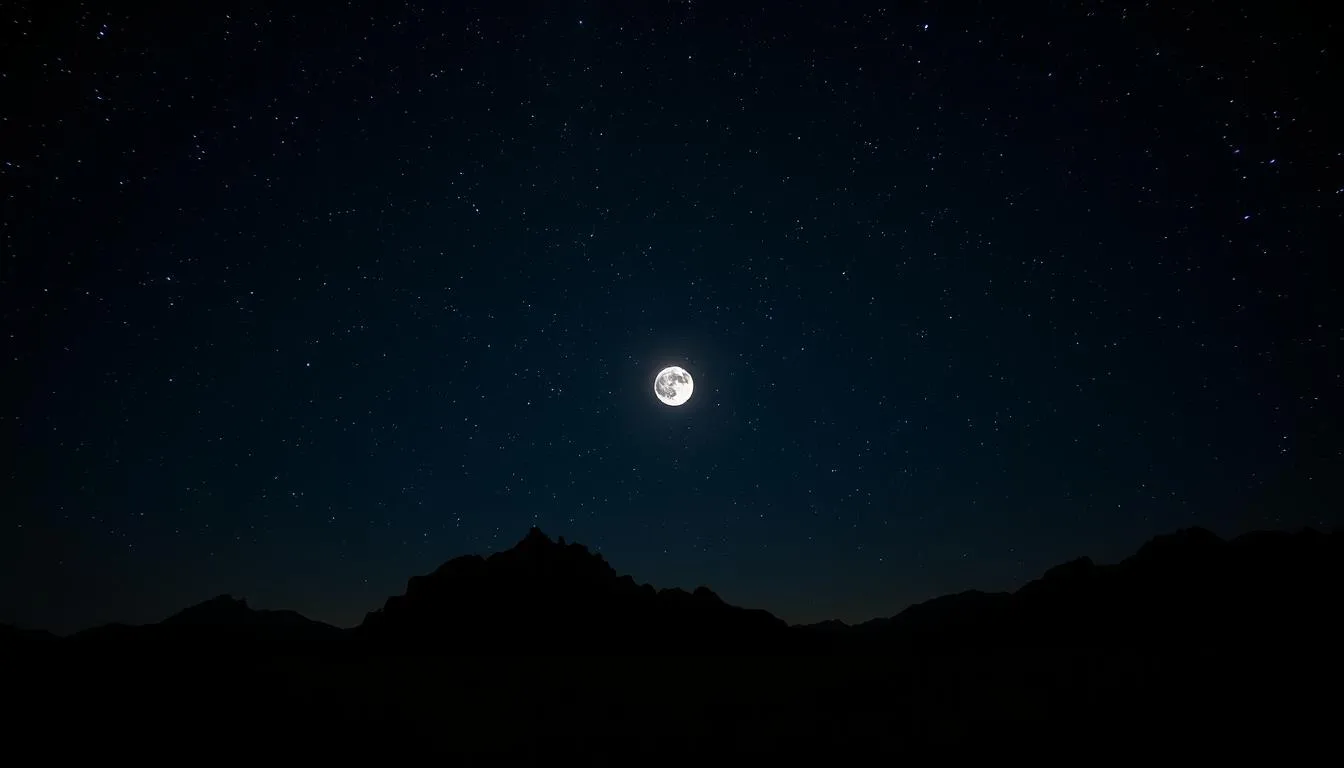Surprising fact: more certified dark-sky places are in Utah than in any other state, including six national park units and the world’s first International Dark Sky Park at Natural Bridges.
From Arches and Canyonlands to Bryce Canyon and Zion, Utah sets the standard for clear views of the Milky Way. Arizona adds broad desert plains where humidity is low and the skies stay crisp. These places give visitors more stars than most people ever see.
Expect ranger-led programs, star parties, and simple tips from the National Park Service like using red headlamps and protecting wildlife. Many communities now manage outdoor lighting to limit glare and preserve dark sky quality.
Whether you are a family, a first-timer, or a photographer and East Canyon let people enjoy huge skies without long drives. Pack a red light, plan for moon phases, and you will have quiet, unforgettable nights that connect you to the natural world.Island and East Canyon let people enjoy huge skies without long drives. Pack a red light, plan for moon phases, and you will have quiet, unforgettable nights that connect you to the natural world.
Key Takeaways
- Utah leads with multiple certified dark sky places and national park experiences.
- Arizona offers exceptionally clear skies and reliable viewing conditions.
- Ranger programs and star parties add context and safety for visitors.
- Choose certified places and time trips by moon phase for best viewing.
- Respect wildlife and use red lights to protect night-adapted animals.
Night‑Sky Tourism in the United States: What It Is and Why It Matters
More visitors are choosing trips built around clear, protected views of the heavens. Night‑sky tourism means travel focused on seeing more stars, learning constellations, and joining guided programs in places that keep darkness intact.
The movement matters because reducing light pollution saves wildlife habitat, supports human health, and preserves cultural stories tied to the sky. Protected places let people witness a part of the world many have never seen.
National park units and certified sites, including international dark sky areas, set lighting standards and offer ranger-led programs that combine science with local stories. These efforts keep skies darker and visits richer.
Simple actions help everyone. Use a red headlamp to keep night vision, limit stray lights, and follow site rules. These small steps reveal fainter objects and improve viewing for all.

- Choose stewardship-minded places to ensure high-quality experiences.
- Expect programs that blend astronomy, culture, and nature for families and first-timers.
Utah’s International Dark Sky All-Stars: Parks, Communities, and Can’t-Miss Programs
Utah packs an unrivaled roster of protected dark places that pair dramatic rock forms with clear, low-humidity viewing. Natural Bridges holds a unique place as the world’s first International Dark Sky Park, and Rainbow Bridge is the National Park Service’s first International Dark Sky Sanctuary.
 Iconic national parks—Arches, Canyonlands, Zion, Bryce Canyon, and Capitol Reef—offer established programs and classic overlooks. Dead Horse Point was the first Utah state park to earn IDA certification and runs frequent telescope nights and constellation tours.
Iconic national parks—Arches, Canyonlands, Zion, Bryce Canyon, and Capitol Reef—offer established programs and classic overlooks. Dead Horse Point was the first Utah state park to earn IDA certification and runs frequent telescope nights and constellation tours.
Near cities, quick options include Antelope Island at Buffalo Point and Jordanelle’s Rock Cliff Nature Area. Timpanogos Cave is the first NPS unit certified as an Urban Night Sky Place and hosts summer programs in American Fork Canyon.
State park gems like Goblin Valley, Goosenecks, Rockport, and Steinaker give quieter, photo‑friendly foregrounds for the Milky Way and other targets. Cedar Breaks holds weekend programs at Point Supreme each summer.
Base your trip in certified communities—Torrey, Moab, Helper, Bluff, Castle Valley, or Springdale—for easy access and local programs. Check event calendars, reserve campsites in advance, and bring layers plus a red headlamp to make the most of these incredible dark places.
For trip ideas and local guides, see a short planner at Utah dark sky trip tips.
Arizona After Dark: Certified Dark Sky Parks and Desert Skies
Arizona’s deserts reward stargazers with some of the clearest, driest skies in the continental United States. Clear, arid air and low humidity create steady transparency and excellent seeing for both naked‑eye viewing and telescopes.

Why Arizona excels: clear, dry air and low humidity
Low humidity reduces haze and keeps stars sharp. High desert basins and elevated parks often deliver steady seeing, so faint objects pop through the darkness.
Plan a desert stargazing campout under certified places
Pair a simple desert campout with sunrise photography for a full experience. Build an itinerary that mixes remote areas with viewpoints near national park gateways for safety and comfort.
- Bring plenty of water and daytime sun protection; switch to layers after sunset.
- Use a red headlamp to keep dark adaptation and pack a warm coat for cool desert hours.
- Check moon phases and arrive before twilight to set up gear and let your eyes adjust.
- Look for park programs or local astronomy club events to add context about constellations and cultural sky lore.
| Feature | Why it matters | What to pack |
|---|---|---|
| Clear, dry air | Improves transparency and seeing for telescopes | Optical filters, simple telescope, star app |
| Certified international dark sky areas | Protected lighting preserves true darkness | Red headlamp, lawn chair, warm layers |
| Accessible viewpoints | Balance comfort with remote viewing | Water, sun protection, campsite reservation |
National Park Night Skies: Signature US Park Experiences
From cliff-edge viewpoints to desert basins, national parks offer a wide range of stargazing backdrops. Point Lookout at Mesa Verde gives visitors a classic view where the Milky Way arches above cultural landscapes.
Mesa Verde to Milky Way: classic overlooks and cultural skies
Coast-to-canyon choices mean every park shows a different face of the heavens. In some parks, stone monuments frame long star trails. In others, mesas give broad horizons ideal for astrophotography.
Ranger programs, telescope nights, and full-moon walks
The National Park Service runs programs that pair astronomy with park stories. Join ranger-led telescope nights to see planets and deep-sky objects.
Full-moon walks offer a different charm: the Milky Way fades, but moonlight reveals silhouettes and animal movement under soft, natural light.
Nocturnal wildlife: listening and looking safely after dark
Sit quietly to learn about nocturnal life. Pause, listen, and let scenes unfold without shining bright lights into habitats or at other people.
- Go with a buddy, check weather and trails, and pack layers.
- Use a red headlamp to keep night vision and minimize disturbance.
- Arrive before sunset to scout an overlook and help kids learn constellations with a star app.
For park calendars and seasonal telescope nights, check this helpful planner for certified dark places and event listings: dark sky national parks guide.
How to Plan Your Dark Sky Trip: Gear, Safety, and Stargazing Etiquette
A little prep—right tools, weather checks, and quiet habits—turns a good outing into a great one. Use basic planning to protect night vision and help others enjoy the view.
Essentials to pack
Core gear: a red headlamp to protect night vision, warm layers for quick temperature drops, a stable tripod for long exposures, and an offline star app to identify objects under the night sky.
Tip: bring spare batteries and a small towel to keep lenses dry.
Safety first
Check weather and wind before you go. Tell a friend your route and carry water. Know campground quiet hours so visitors and wildlife stay undisturbed.
Arrive early to learn the terrain and place gear safely.
Stargazing etiquette
Keep lights low and red. Avoid shining artificial light at others or into habitats. Dim screens so people can maintain dark adaptation and see fainter targets.
Attend park or local club programs when possible — short talks show what to see tonight and how to navigate constellations. Thoughtful outdoor lighting at camp—downward‑facing, warm color—helps reduce light pollution and keeps skies darker for everyone.
Best Times and Conditions: Moon Phases, Seasons, and Seeing the Milky Way
A simple calendar check can make the Milky Way leap into view or turn an outing into a luminous moonlit walk. Use moon phase and season to match your goal: deep-sky photos or bright landscape hikes.
Reading the moon: new moon windows vs. full-moon hikes
Choose new-moon windows for the deepest dark sky and the best Milky Way photography. The lunar calendar shows multi-night windows ideal for long exposures.
By contrast, full-moon nights wash out faint targets but create safe, dramatic conditions for guided walks and coastal or canyon silhouettes. The NPS recommends moonlit hikes when the full moon is up.
Seasonal highlights: summer Milky Way, winter constellations
Summer and early fall bring the bright Milky Way core into evening skies. That period is prime for photographers and backyard stargazers alike.
Winter offers crisp air and standout constellations such as Orion and the Winter Hexagon. Meteors are visible year‑round; peak showers add memorable moments.
- Arrive 60–90 minutes after sunset during shoulder seasons to let skies darken and seeing stabilize.
- Book moon‑friendly dates early for national park visits and avoid busy holiday weekends.
- Carry a warm layer even in summer; high deserts and plateaus cool quickly after dusk.
- Track meteor showers and conjunctions with a star app and compare light pollution maps to pick better places.
| When | Best use | Plan |
|---|---|---|
| New moon window | Milky Way photos and faint objects | Schedule 2–3 nights, bring tripod and dark-adapted eyes |
| Full moon | Moonlit hikes, bright landscape viewing | Join ranger walks or plan safe, well-marked routes |
| Shoulder seasons | Balanced darkness and milder temperatures | Arrive after twilight; expect stable seeing 60–90 min post-sunset |
| Meteor peaks | High drama without perfect conditions | Scout a low-horizon view; lie back and use a red light sparingly |
Stay flexible: clouds can spoil a planned viewing but open chances for moonlit strolls, night soundwalks, or a park program that deepens your appreciation of the dark sky and local stories.
Light Pollution 101: How to Find Dark Skies and Reduce Light Pollution
Finding dark places begins with knowing what light pollution is and how it hurts contrast in the heavens. Light pollution comes in three main forms: glare, skyglow, and light trespass. Each type reduces the number of visible stars, even miles from cities.
Where to find certified dark-sky places
Start by checking the International Dark‑Sky Association listings for parks, reserves, communities, and sanctuaries. A designated international dark status or a certified international dark site signals long-term protection.
Scan park calendars for regular star parties and look for nearby certified communities. Utah’s Natural Bridges and Rainbow Bridge show how public lands can pair protection with programs and outreach.
Make outdoor lighting work for people and wildlife
At home, choose fully shielded fixtures, warm color temperatures, motion sensors, and curfews to reduce artificial light while keeping safety. Communities can adopt ordinances modeled on dark‑sky association standards and run audits to measure progress.
- Use satellite light‑pollution maps to compare areas and pick better viewing spots.
- Propose upgrades politely to local boards, citing benefits to wildlife, sleep, and local revenue.
- Support curbside audits and simple fixture swaps to reduce light and restore views.
Urban Night Sky Strategies: Stars Closer to Home
City residents can reclaim darker horizons by joining local programs and taking short drives to nearby protected areas. Urban Night Sky Place efforts show how good practices let people enjoy dimmer, richer views without long trips.
Local programs and star parties that make a difference
Timpanogos Cave National Monument is the first NPS unit certified as an Urban Night Sky Place and runs popular summer programs in American Fork Canyon. These events model lighting best practices for communities.
The NPS also recommends attending astronomy club public star parties. Volunteers set up telescopes in parks and school fields and help beginners learn constellations and gear basics.
- Scan local calendars for club events and park programs; volunteers often share telescopes and tips.
- Pick lake shores or parks sheltered by terrain to help you find dark corners closer to home.
- Use quick fixes on site: a cap brim to block stray light, a red headlamp, and a downward-angled screen to protect others’ dark adaptation.
- Try short drives to nearby sky parks like East Canyon or Jordanelle for better darkness without a full weekend away.
| Strategy | Why it works | Action |
|---|---|---|
| Urban Night Sky Place programs | Showcase practical lighting and outreach | Join summer events at Timpanogos Cave; learn local rules |
| Astronomy club star parties | Offer gear access and friendly teaching | Bring a chair and questions; arrive before dusk |
| Community lighting upgrades | Reduces pollution and improves safety | Support shielded fixtures and timed controls |
For an example of Urban Night Sky Place work and local planning, see this resource on urban programs: Urban Night Sky Place.
Conclusion
From landmark designations to local lighting upgrades, US parks and towns are making stellar experiences more accessible.
Utah anchors this work—Natural Bridges holds the first international dark sky park title and Rainbow Bridge became the first NPS International Dark Sky Sanctuary. Nearby certified communities expand access so more visitors see true dark sky views.
Arizona’s dry deserts add reliably clear conditions for camping under incredible dark skies. Plan trips around moon phases, bring a red headlamp and warm layers, and join park offers like ranger programs and telescope nights for safe, richer outings.
Small actions at home and in towns—shielding lights and supporting upgrades—help reduce pollution and keep more stars visible across the region. Keep exploring dark sky parks and return in different seasons to watch the world above change.
FAQ
What is dark-sky travel and why does it matter?
Dark-sky travel focuses on visiting places certified by the International Dark-Sky Association and other protected areas to view stars, the Milky Way, and celestial events. It matters because these destinations preserve natural nightscapes, reduce light pollution, support wildlife, and deliver memorable outdoor experiences in national parks, dark sky parks, and designated communities.
Where are the best places in the U.S. to see a truly dark night?
Outstanding locations include Utah’s Arches, Canyonlands, Bryce Canyon, and Capitol Reef, plus Arizona’s certified dark-sky parks and many national parks from Mesa Verde to Great Basin. Look for International Dark-Sky Places, state park gems, and Dark Sky Communities like Torrey and Moab for reliable views.
Can I see the Milky Way near a city?
Yes. Some urban-edge sites such as Antelope Island and North Fork American Fork Canyon are designated Urban Night Sky Places and offer surprisingly bright Milky Way views when moonlight is low and conditions are clear.
How do I plan a stargazing trip safely and comfortably?
Pack essentials: a red headlamp, warm layers, tripod, and star apps. Check weather and park alerts, travel with a buddy, follow trail and campground guidance, and attend ranger-led programs or star parties to learn safe practices.
When is the best time to see the Milky Way or faint constellations?
Aim for new-moon windows and summer months for the Milky Way core in the Northern Hemisphere. Winter offers crisp air and different constellations. Always check moon phase calendars and seasonal visibility charts before you go.
What is the International Dark-Sky Association certification and how does it help visitors?
The International Dark-Sky Association (IDA) certifies parks, reserves, and communities that meet strict outdoor lighting and conservation standards. Certification signals excellent viewing conditions and programs designed to protect natural darkness for visitors and wildlife.
Are there ranger-led night programs or star parties I can join?
Yes. Many national and state parks, especially in Utah and Arizona, offer ranger-led night sky programs, telescope nights, and seasonal star parties. These events are great for learning local astronomy, cultural sky stories, and safe observing tips.
How can communities and homeowners reduce light pollution?
Use shielded fixtures, lower lumen output, choose warm-color LEDs, and follow local outdoor lighting codes. These steps improve visibility for residents and visitors and support certified dark-sky efforts in towns and parks.
What gear is essential for astrophotography or serious observing?
Bring a sturdy tripod, a camera with manual controls or a DSLR/mirrorless, remote shutter, wide-aperture lens, and spare batteries. Star-tracking mounts help for long exposures. Apps and star charts assist framing the Milky Way and constellations.
Can I experience nocturnal wildlife during a stargazing outing?
Yes. Many protected areas offer opportunities to hear and sometimes spot nocturnal species. Stay quiet, use red light only, keep distance, and follow park rules to avoid disturbing animals while enjoying the dark protected environment.
